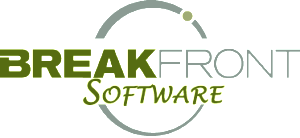
This was first written about in 1979 by two brilliant researchers Daniel Kahneman and Amos Tversky in a paper titled Prospect Theory: An Analysis of Decision Making under Risk.
Face it, losses loom larger than gains
I’ll save you the dissertation about the fascinating human condition. Suffice it to say that people tend to take the safer route and go for the incremental wins, instead of taking necessary risks when for the bigger wins.
Even when mathematically the obvious choice screams to take the risk, people still find that the safer route is the logical conclusion. Of course, this has stumped economists and rational thinkers for decades, and entire books have now been written on the subject of how insane this concept is. Yet time and time again, we defy the logical approach for the safer bet.
Just look at the cabinet industry
Kitchen and bath industry businesses of all sizes have made it their mission statements to look at incremental gains as they improve business as usual with little tweaks here and there. A more improved spreadsheet, a slightly “less difficult to use manufacturer pricing program,” and even new and improved paper forms (this time with better formatting).
And cabinet manufacturers are no different. Sure, they’ll innovate on product and then copy each other, but they wouldn’t dare innovate on a business process, a way to go to market or some other industry-shifting way of moving their product through their dealers. The risk of failing (or getting laid off) is just too high.
For example, did you ever wonder why some cabinet manufacturers still try to get their orders in electronically from CAD, even when facing overwhelming data that electronically ordering from kitchen design software doesn’t work? It’s because innovation is just too risky – the risk of trying something new is so scary it can even encourage people to continue investing in crap that doesn’t work.
Barely noticeable improvements are the name of the game
We live in an industry where industry professionals and manufacturers strive for barely noticeable improvements to the ways they do business. While kitchen and bath businesses should be changing their operations and improving everything they do in big ways, some still opt for the safer route.
And that’s a huge problem. Safer might feel safe initially, but over time it’s actually quite a bit more dangerous than dealers may realize.

